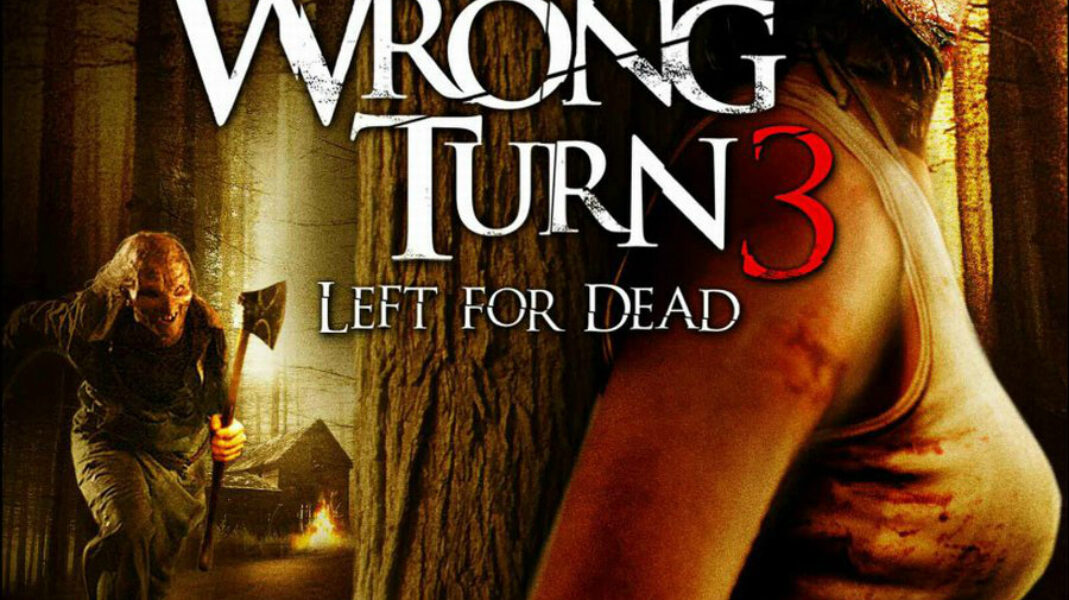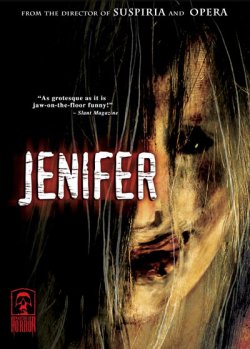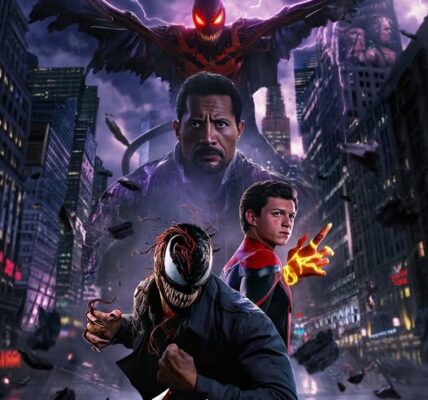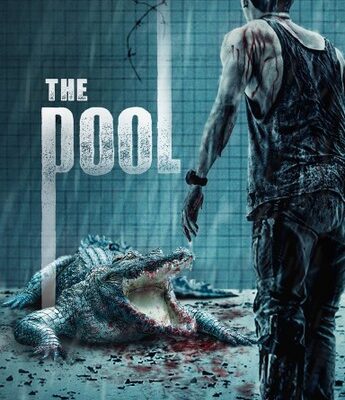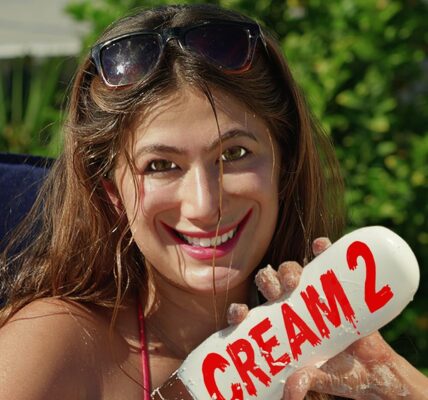1. Plot Summary
Wrong Turn (2003), directed by Rob Schmidt and written by Alan B. McElroy, is a brutal backwoods horror-thriller.
Chris Flynn (Desmond Harrington), a medical student en route to a job interview, diverts onto a rural mountain road in West Virginia after worrying he’ll be late. He collides with a second car carrying a group of five friends: Jessie (Eliza Dushku), Carly (Emmanuelle Chriqui), Scott (Jeremy Sisto), Evan (Kevin Zegers), and Francine (Lindy Booth) — whose vehicle had been sabotaged by barbed wire laid across the road.
As they trek toward help, the group discovers a cabin with grisly body parts. They realize they are being stalked by three cannibalistic, inbred mountain men — known only by their deformities and monikers (Three Finger, Saw Tooth, One Eye) — who use traps, stealth, and brutal violence to hunt their victims.
The survivors, including Chris, Jessie, and Carly, attempt to escape through forest and fire, leading to an explosive confrontation at the cabin. In a mid-credits scene, one of the cannibals, Three Finger, emerges from the wreckage and kills a pursuing deputy, indicating the terror is not over.
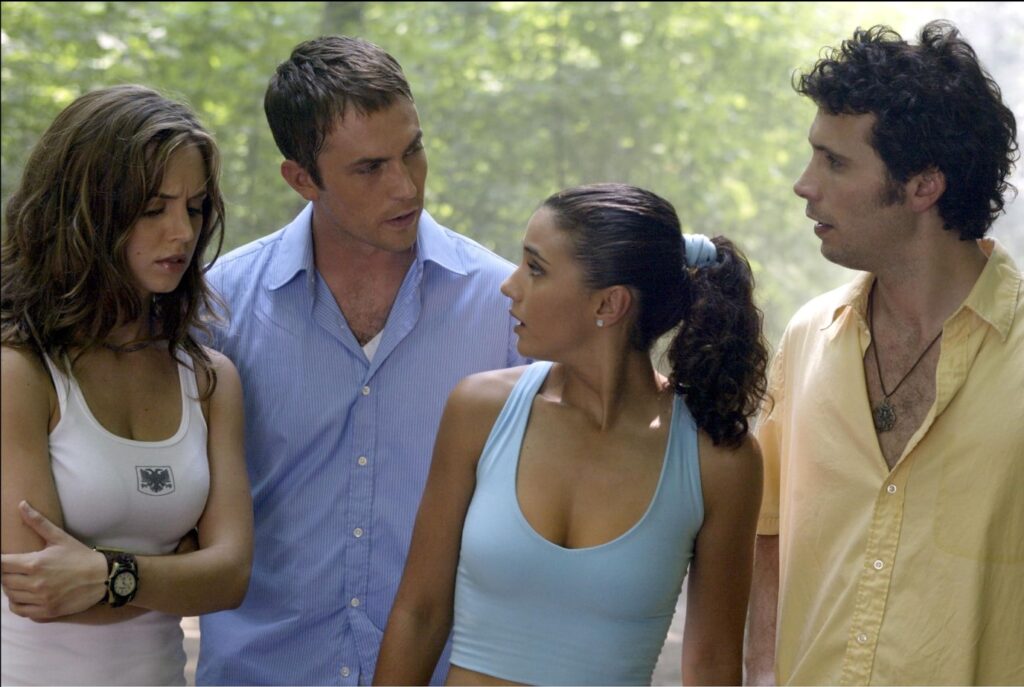
2. Notable Elements
a. Gore & Practical Effects
One of Wrong Turn’s most distinctive elements is its visceral, physical gore. The special effects, guided by the legacy of Stan Winston’s team, employ in-camera illusions that make the violence especially vivid — for instance, the moment where Carly is hit by an axe and her head is seen “lodged” before the body falls. This sequence is frequently cited among fans as the film’s gruesome visual high point.
b. Cinematography & Setting
Though filmed far from West Virginia — much of the “wilderness” is a park near Toronto — the cinematography and production design succeed in creating an isolated, suffocating forest atmosphere. The forest becomes an antagonistic force, its shadows and foliage concealing danger at every turn.
c. Tension & Pacing
The film’s pacing is lean: it wastes little time in putting characters into peril, and doesn’t overly pause for exposition. That leaves less “dead air” and maintains suspense. Some scenes — like the wire trap, or the fire in the watchtower — are staged well to build dread.
d. Character Vulnerability & Escalation
There’s no “invincible” hero. Chris, Jessie, and Carly are flawed, terrified, and truly tested. Several supporting characters are dispatched in brutal, unpredictable ways, reinforcing the peril. The film doesn’t always give closure to every fate, which is unsettling but effective.
However, the simplicity of the characters (the “group of young people, some couples, some single”) means fewer opportunities for deep emotional investment before the carnage begins.
3. Themes & Messages
At its core, Wrong Turn is less about deep philosophical discourse than pure survival horror. But there are some underlying threads:
- Isolation & hubris: The film underscores how easily modern strangers are undone when cut off from civilization — no cell signal, no nearby road, no help.
- Nature as hostile: The forest isn’t benign — it’s weaponized. Trees, darkness, traps — all conspire against the protagonists.
- Othering & fear of the rural: The film plays on horror tropes of “hillbilly savages” and rural outsiders, raising questions about prejudice, fear, and the monsters beyond the edge of the map.
- Survival & sacrifice: The film asks who will survive, and at what moral cost — even the “innocent” may have to act ruthlessly to survive.
Because Wrong Turn was not designed around holiday traditions (unlike seasonal horror), there’s no overt tie to festive or sentimental themes. But in a broader sense, it touches on the fragility of security we often take for granted — the notion that being “off the grid” might expose us in ways we’re not ready for.
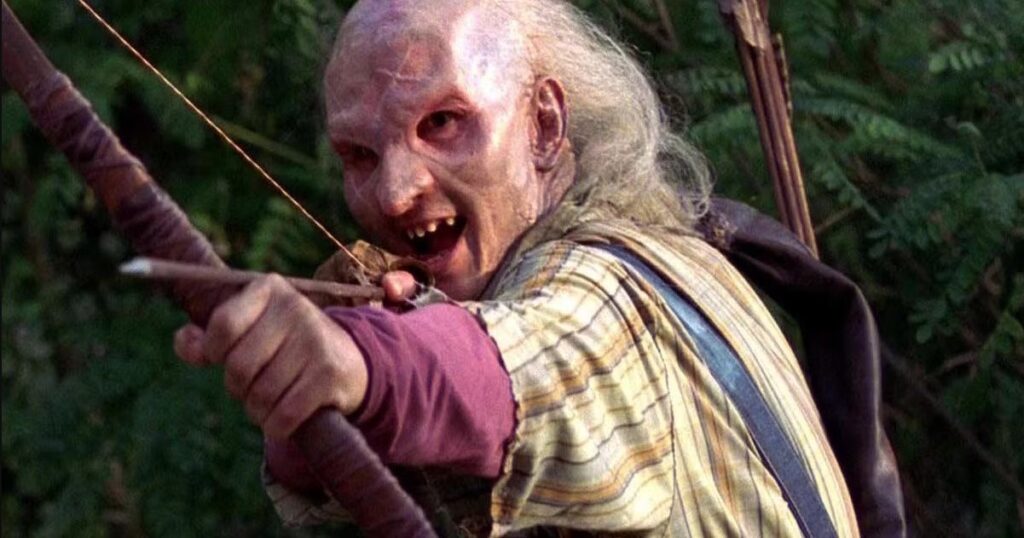
4. Personal Impressions
Strengths:
- Wrong Turn delivers in pure horror spectacle: it doesn’t pretend to be lofty, but it does what it aims to do very well. The tension, the fear, the rawness all land.
- The practical gore effects are superior to many CGI-heavy alternatives, and some kills linger in memory.
- The forest setting is claustrophobic in a wide space — a nice paradox that sucks you in.
- The acting is serviceable: the leads are sympathetic enough to root for, even if they aren’t deeply complex.
Weaknesses / What Didn’t Work as Well:
- The characters are somewhat archetypal and interchangeable — we don’t get much backstory or unique personality before the horror takes over.
- The “hillbilly monster” trope is well worn; Wrong Turn doesn’t do a lot to subvert it, which makes parts feel derivative.
- Some pacing drags in the middle, particularly when the group debates what to do next.
- The mid-credits twist (Three Finger surviving) is effective for horror fans, but feels tacked on in terms of narrative cohesion.
In short: it’s a thrill ride more than an intellectual puzzle. For viewers who demand depth and nuance, it might be disappointing. But for horror fans looking for visceral scares, it mostly succeeds.
5. Audience Recommendations
If you enjoy:
- Classic 1970’s–80’s horror (a la The Texas Chainsaw Massacre, Deliverance)
- Practical effects, gore, and visceral horror over jump scares
- Wilderness / survival horror
- Films where the environment itself is an opponent
- Stories of desperation and human fragility under extreme stress
…then Wrong Turn is likely to deliver for you.
If instead you prefer psychologically subtle horror, rich character drama, or horror that leans heavily on symbolism, this may not be your ideal pick.
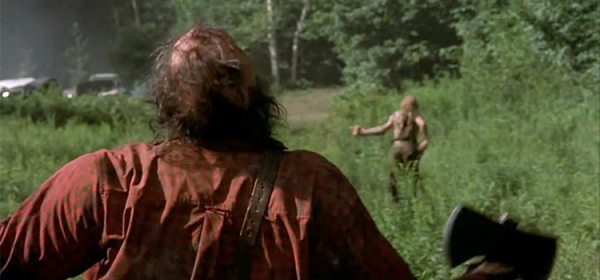
6. Conclusion & Rating
Final Thoughts:
Wrong Turn is unapologetically raw and brutal. It doesn’t aim to be poetic or profound — it wants to terrify, and it mostly succeeds. The practical effects, the sense of relentless danger, and the isolation all combine to make it a solid entry in the survival-horror / slasher canon. It may not reinvent the genre, but it’s a strong example of doing what it sets out to do well.
Rating: ★★★★☆ (4.0 / 5)
